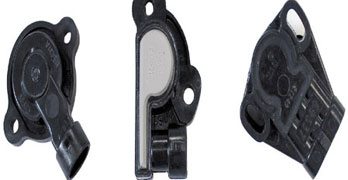AuroraGirl
Full Access Member
- Joined
- Sep 8, 2019
- Posts
- 9,209
- Reaction score
- 6,193
- Location
- Northern Wisconsin
- First Name
- Taylor
- Truck Year
- 1978, 1980
- Truck Model
- K10, K25
- Engine Size
- 400(?), 350
You must be registered for see images attach
The two-wire, flat-response-type knock sensors are used with Gen IV engines (left) and Vortec V-6 engines (right). The 1999-newer Gen III PCMs can accept the signal of either type of knock sensor.
==
For best results, the knock sensor(s) should be located where detonation-related frequencies can be detected. The sensor should be of a design that accurately generates the appropriate voltages to the PCM when those frequencies occur. With the introduction of aftermarket valvetrain upgrades, larger-cubic-inch engine builds, and other aftermarket parts that alter engine frequencies, matching a knock sensor, its location, and PCM calibration details can be difficult.
There are two types of knock sensors used with the LS-series PCMs: resonant and flat response. The resonant sensor is a single-wire connection to the PCM and the flat-response sensor is a two-wire connection to the PCM.
Resonant Knock Sensor
The single-wire resonant knock sensor was introduced with early small-block engines. This sensor typically threads into one of the coolant plug holes near the center of the block just above the oil pan. TPI engines use only one knock sensor and, with the exclusion of the Camaro and Firebird, LT1 engines use two knock sensors.
You must be registered for see images attach
The sensors look the same, but are not interchangeable. LS-series engines use a similar knock sensor with a straight M10x1.5 thread. In the LSseries engine, resonant knock sensors are found under the intake manifold.
Flat-Response Knock Sensor
The two-wire, flat-response knock sensor requires either an attaching bolt or stud for attachment to the engine. The flat-response knock sensor was introduced with the 2005 LS2 engine and with the 2001 4.3L Vortec engine. With proper calibration changes and a little engine wiring work, the early LS-series PCM can be configured to use the flat-response knock sensors. It’s a convenience for LS2 engine swaps into LS1 vehicles.
You must be registered for see images attach
=-===========================
I got it from a website, which i recreated the entire knock sensor section aboveInterestingly enough.. this is not necessarily accurate. The black box GMT-400's use two knock sensors, one on each side(at least in the L29 454 version). The Gen III LS motors have two in the valley cover and the Gen IV ones have two not in the valley cover(they wouldn't have room with the AFM/DOD stuff in there), although there is some variability in that as well.

Upgrading to Gen III LS-Series PCM: Sensors and Inputs Guide
Upgrading to Gen III LS-Series PCM: Sensors and Inputs Guide includes instructional photos, checklists, and step-by-step instructions on upgrading to the GM Gen III LS-Series PCM, ECM, Electronics, and POWERTRAIN CONTROL SYSTEMS

